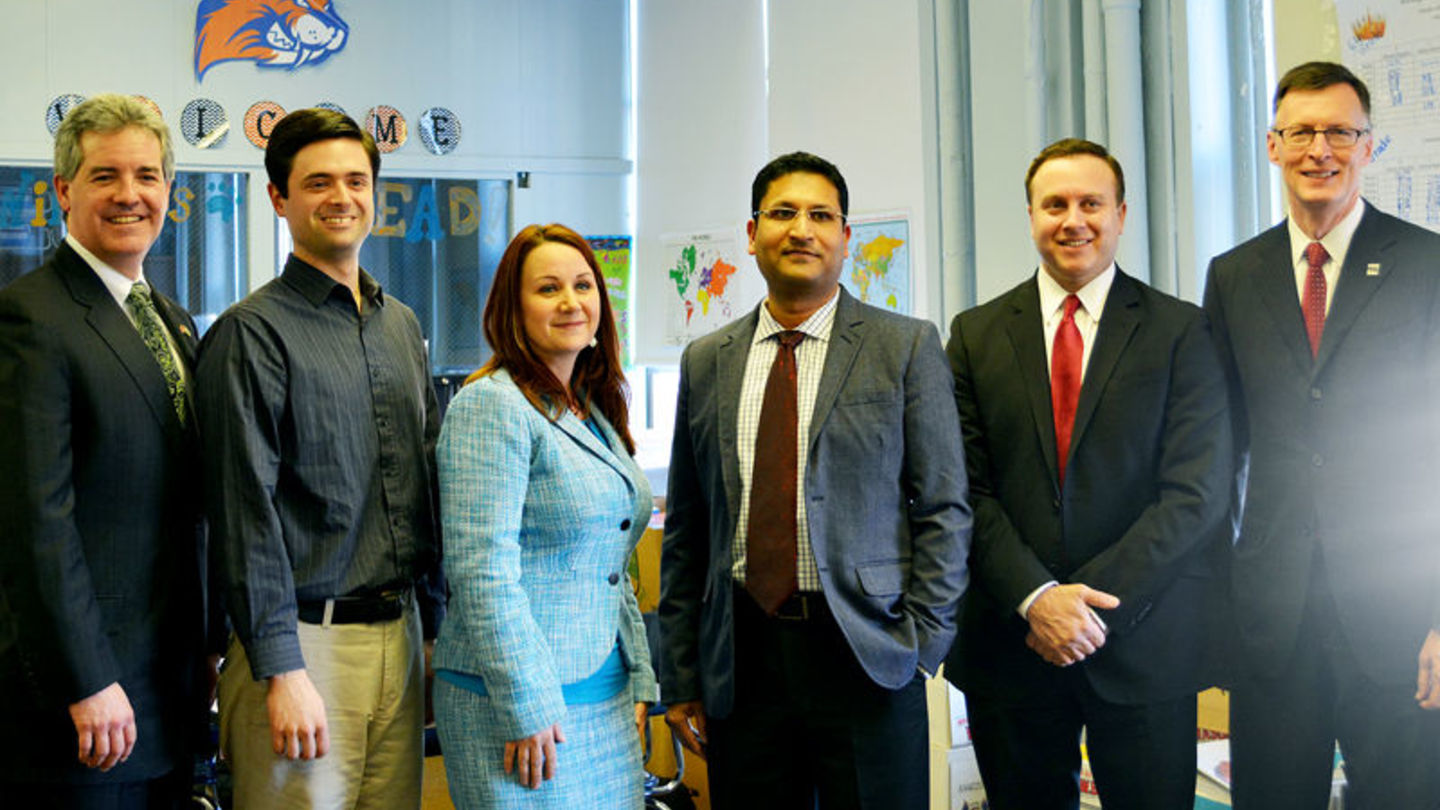
Funding from the U.S. Environmental Protection Agency to Temple University will help plan for health, environmental and economic improvements for Philadelphia's Kensington area residents through the cleanup and reuse of brownfield properties in a 161-acre area which is part of the North of Lehigh neighborhood.
The EPA awarded a $200,000 Brownfields area-wide planning grant to Temple University to develop the project.
"I'm pleased to announce that Temple is the first university to receive an EPA Brownfields area-wide planning grant," said EPA Regional Administrator Shawn M. Garvin. "Helping build healthy and resilient communities is an EPA priority. This funding to Temple underscores the University's environmental leadership and commitment to improving the health and future of its neighboring communities."
With the EPA funding, Temple University's Center for Sustainable Communities will collaborate with the New Kensington Community Development Corporation (NKCDC) and leaders from community and city organizations including the Philadelphia City Planning Commission, Conrail, and SEPTA Police Department to engage the community in planning and designing future uses of brownfield properties.
"Temple University strongly believes in university-community partnerships. The Center for Sustainable Communities develops such partnerships for most of our research projects," said Dr. Jeffrey Featherstone, Director of the Center for Sustainable Communities. "With generous support from the Environmental Protection Agency's Brownfields Area-Wide Planning grant program, we will work with the New Kensington Community Development Corporation on numerous community outreach and visioning exercises, including participatory photo mapping, focus groups and design workshops. We will also arrange a number of community meetings throughout the project period. Community involvement and participation is integral to this project."
The Center will develop an area-wide plan for a key portion of Philadelphia's Lower North Delaware Industrial District, focusing on brownfield sites adjacent to the Lehigh Viaduct, a freight rail corridor located along Lehigh Avenue, between Kensington Avenue and I-95. The primary focus will be between Kensington Avenue and Tulip Street, according to Dr. Mahbubur Meenar, Assistant Director of GIS Operations and Research for the Center for Sustainable Communities and an adjunct faculty member in Temple's Department of Community and Regional Planning.
"The project area exemplifies the cumulative detrimental effects of a formerly industrial neighborhood -- a distressed community left behind with significant social, public health and environmental justice concerns. There are also striking public health concerns within the community, including lack of healthy food availability and accessibility to open space," said Meenar, who is the principal investigator on the project. "The brownfields challenges in our project are representative of both location-specific factors and issues typical of brownfield redevelopment. One hundred-fifty years of industrial history, from coal to textile or food distribution, cannot help but leave a trace."
According to Meenar, Temple's project team is "truly multi-disciplinary."
"There are community and regional planners, including Dr. Jeffrey Doshna, Dr. Jeffrey Featherstone, and Dr. Lynn Mandarano," he said. "There are architects and landscape architects, including Dr. Mary Myers and Robert Fleming of Re-Vision Architecture, economists from Econsult Solutions, and community development specialists from NKCDC."
The community engagement effort "has been tailored to meet the demands of working with stakeholders that are not accustomed to engaging in such a project, said Mandarano.
"We will be use participatory photo-mapping - an emerging practice to empower residents with a voice in the planning process," she said. "Residents will be recruited to photograph places they like in the neighborhood and other areas of the city. A photo gallery will be displayed at project meetings for others to comment on the elements of these places they would like to see incorporated into the site designs."
Nationwide this year, EPA awarded approximately $4 million in area-wide planning grants to 20 communities in 16 states. The funds will be used to engage communities and conduct planning for Brownfields revitalization.
Strategies for site reuse often lead to increased opportunities to leverage public and private investment and strengthen local economies. Since 1995, EPA has awarded 13 brownfields grants totaling $4.6 million to assess and cleanup sites and provide job training in Philadelphia.
In addition to the collaboration of local efforts, the partners and Temple will be able to benefit from state and federal collaboration with transportation, housing, employment and economic development agencies.
Pictured above: From left: Shawn Garvin (EPA Regional Administrator), Andrew Goodman (Community Engagement Director, New Kensington CDC), Dr. Christine Borelli (Chief Executive of Memphis Street Academy), Dr. Mahbubur Meenar (Assistant Director, Center for Sustainable Communities, Temple University), Stephen Nappi (Temple Associate Vice Provost for Technology Commercialization and Business Development) and Duane Bumb (City of Philadelphia's Deputy Commerce Director)
